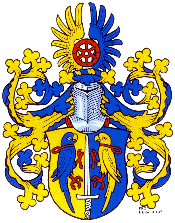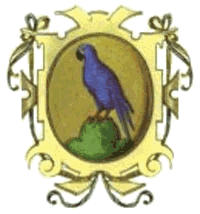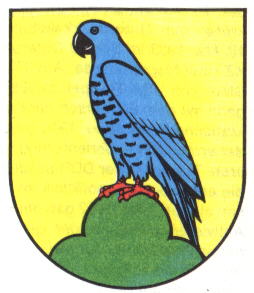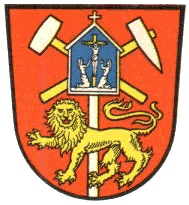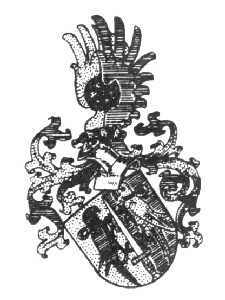
Click image to enlarge |
A Bonitz family coat of arms
The only Bonitz family coat of arms known so far was adopted in 1962 by Peter-Michael Bonitz in favor of the descendants of Friedrich Gottlob Bonitz (1773-1840) and was registered at Pro Heraldica. His paternal line goes back to Jorg Boniz (* before 1480), landowner in Kühnhaide (today: Zwönitz) in Saxony.
The left picture of the coat of arms is taken from "Das große Buch der Wappen" by Ottfried Neubecker. Many thanks to André Bonitz. It is also registered and described in Siebmacher's book of coats of arms.
The blazon (textual description) of this coat of arms reads: Shield split by erected silver sword, gold in front of blue. In both fields a parakeet in opposite colors, red armored, with red legs drawn up and red neck ring, the wings closed (not opened for flying). On the helmet with blue-gold blankets and the same bead, a closed flight, gold in front, blue behind, between which an ancient red chariot wheel can be seen. (Siebmacher)
More detailed information about the meaning of the figures in the coat of arms and its history of origin is not yet known.
The similarity of the symbolism in the shield with the heraldic bird of the town of Zwönitz (Saxony) is striking. The Bonitz family, which bears this coat of arms, actually comes from Kühnhaide, which is now incorporated into Zwönitz. |

